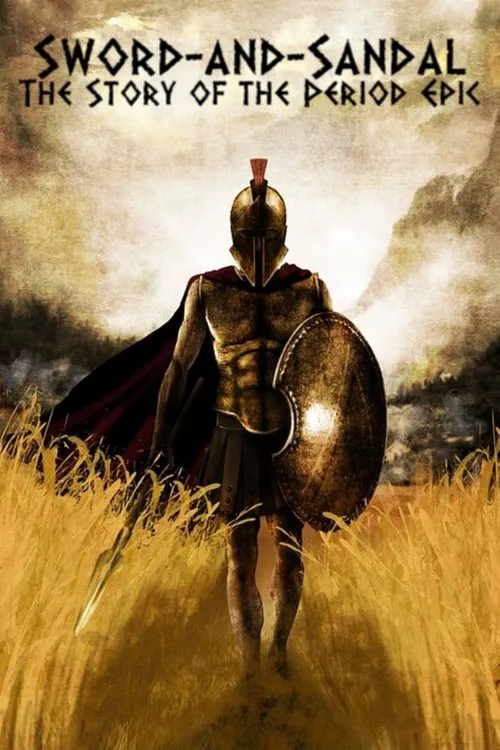Sword-and-Sandal: The Story of the Period Epic

พล็อต
The peplum genre, also known as sword-and-sandal cinema, is a period epic category of films that originated in the silent film era and flourished primarily in the 1950s and 1960s. The genre is characterized by its depiction of historical and mythological events in Ancient Greece and Rome, often with a focus on muscular and charismatic protagonists, grandiose settings, and epic battles. The peplum genre has a rich history, spanning from the early days of cinema to the present day, with influential films and filmmakers leaving an indelible mark on the world of cinema. The silent film era, which began in the late 1800s and continued until the 1920s, saw the emergence of pioneers such as George Sessue and Douglas Fairbanks, who helped establish the foundation for the peplum genre. These early films often featured swashbuckling heroes and historical events, but they lacked the grandiose and melodramatic elements that would become a hallmark of the peplum genre in the decades to come. The sound era, which began in the 1920s, brought new opportunities for the peplum genre. Filmmakers like Cecil B. DeMille and Anthony Mann produced epic films like 'Samson and Delilah' (1949) and 'Fall of Babylon' (1919), which showcased the power and drama of ancient civilizations. However, these films were often criticized for their historical inaccuracies and lack of focus on mythological themes. In the 1950s and 1960s, the peplum genre reached its height of popularity, with the release of influential films such as 'Hercules' (1958), 'Jason and the Argonauts' (1963), 'The Ten Commandments' (1956), and 'Ben-Hur: A Tale of the Christ' (1959). These films featured epic battles, memorable characters, and stunning visual effects, cementing the peplum genre's status as a staple of popular cinema. Directors such as Mario Bava and Ray Harryhausen played significant roles in the development of the peplum genre. Bava's 'Hercules in the Haunted Mirror' (1961) and Harryhausen's 'The 7th Voyage of Sinbad' (1958) showcased the genre's potential for innovative visual effects and suspenseful storytelling. These films, along with others, pushed the boundaries of the peplum genre, incorporating fantastical elements and mythological themes that added to the genre's mystique. One of the most iconic and influential peplum films is 'Ben-Hur: A Tale of the Christ' (1959). Directed by William Wyler and starring Charlton Heston, this film is a masterclass in epic storytelling, boasting sweeping landscapes, thrilling action sequences, and memorable characters. 'Ben-Hur' won 11 Academy Awards, cementing its status as one of the greatest peplum films of all time. The early 1960s saw the rise of Italian filmmakers, who helped establish the peplum genre as a staple of European cinema. Directors like Mario Bava and Luciano Santi produced films that showcased the genre's potential for innovative storytelling and visual effects. These films often featured charismatic protagonists, memorable characters, and a unique blend of history and mythology. The mid-1960s saw the decline of the peplum genre, as audiences began to lose interest in the repetitive and often formulaic storytelling of the films. However, this period also saw the emergence of new filmmakers who pushed the boundaries of the genre. Directors like Pasquale Squitieri and Duccio Tessari produced innovative films that experimented with the peplum genre's conventions. These films often incorporated elements of science fiction and fantasy, adding a new layer of complexity to the genre's storytelling. In the 1970s and 1980s, the peplum genre experienced a resurgence, with the release of influential films like 'Jason and the Argonauts' (1963) and 'Clash of the Titans' (1981). These films showcased the genre's ability to adapt to changing audience tastes and technological innovations. The early 1990s saw a new wave of peplum films, with the release of films like 'The Mummy' (1999) and 'The Scorpion King' (2002). These films often incorporated elements of science fiction and fantasy, drawing on the genre's rich history and mythology. Today, the peplum genre continues to thrive in various forms, from big-budget blockbusters to independent films. The rise of streaming services has made it easier for audiences to access and rediscover classic peplum films, such as 'Hercules' (1958) and 'Ben-Hur: A Tale of the Christ' (1959). New filmmakers are experimenting with the genre's conventions, incorporating fresh perspectives and innovative storytelling techniques. As a result, the peplum genre remains a vibrant and dynamic category of films, inspiring new generations of filmmakers and captivating audiences around the world.
วิจารณ์




